“Old” Frontiers of Transportation
We’re looking back… way back.
Transportation Development in North America during the 19th Century
Our society is reliant upon transportation networks to facilitate growth and stability. And getting goods around the world is faster than ever! We live in an amazing time of near-immediacy and instant gratification, and when we expediently ship things, we measure its arrival in days, if not hours. At Challenger, we are proud of our abilities to quickly and efficiently ship our customers’ goods around the continent and the globe with over forty years of experience within the transportation industry.
A long time ago, these same shipments would be calculated in terms of weeks, if not months. When we actually look at the origins of transportation networks and technologies in North America, it is fascinating to see just how far things have been able to come.
During a time long before Challenger (predating the trucking industry entirely), around the year 1800 or so, the Western Frontier was still a mystery and transportation was a slow, disjointed enterprise that took exponentially longer than today’s efficient methods.
I find it compelling to look back upon early North America to see how transportation has changed, developed, improved and become intertwined with our economic and societal success. Today, our society is dependent upon transportation, but what was it like when transportation was less than dependable?
Let’s take a look at “back in the day”…. And I mean back in the day. In the 1800s, during a time when much of the Wild West was still in fact wild, much of it uncharted, transportation was a fickle, long-winded and often unreliable industry. And while there were some road and water networks, the time it took to get from one place to another, even if they were relatively close by today’s standards, was glacial. When considering a trip of dedicated travel from one side of the country to the other, it would take months. Roads were scarce, journey’s dangerous, and your common day road trip was a major expedition… it was astounding! As infrastructure and settlement increased, colonization moved westward, and a dedication to improving the transportation industry and connecting the North American continent took wing. The following maps, taken from the Atlas of the Historical Geography of the United States, illustrate the change in travel times though the 19th century.

These images show us how far one can reach in 6 weeks dedicated travel time from New York as a starting point. In less than six decades, travel became exponentially more effective. | Image Credit: Unless otherwise stated, all map images are from the “Rates of Travel, 1800- 1930” Atlas of Historical Geography of the United States by Charles O. Paullin, ed. John K. Wright, published in 1932. David Rumsey Historical Map Collection.
According to an article, “Your 12-Hour Road Trip Would Have Taken Six Weeks in 1800”, it’s amazing to see how relative travel time is between 1800 and thirty years later (not to mention 200 years later!):
“In 1800, a journey from New York to Chicago would have taken an intrepid traveler roughly six weeks; travel times beyond the Mississippi River aren’t even charted. Three decades later, the trip dropped to three weeks in length and by the mid-19th century, the New York–Chicago journey via railroad took two days. And the introduction of regional airlines in the 1920s made it possible to travel 1,000 or more miles in a single day” (Megan Wiegand, www.slate.com).
In today’s fast paced and globalized world, it’s hard to imagine just how big an undertaking traveling a few hundred miles in North America would be, especially if one were located outside of the more developed East side of the continent. Yet during this time, transportation is being revolutionized, and we begin to see the framework for modernized transportation, including the trucking industry. It’s fascinating to see the quick development over time of transportation as it extends towards the “Wild West” frontier.
In the 18th century, the road network was focused along the East coast. Over the next sixty years, complex networks spread ever-Westward, improving trade, industry and travel. However, only non-motorized methods of transportation were used on these roads: carts, wagons, horseback, etc.
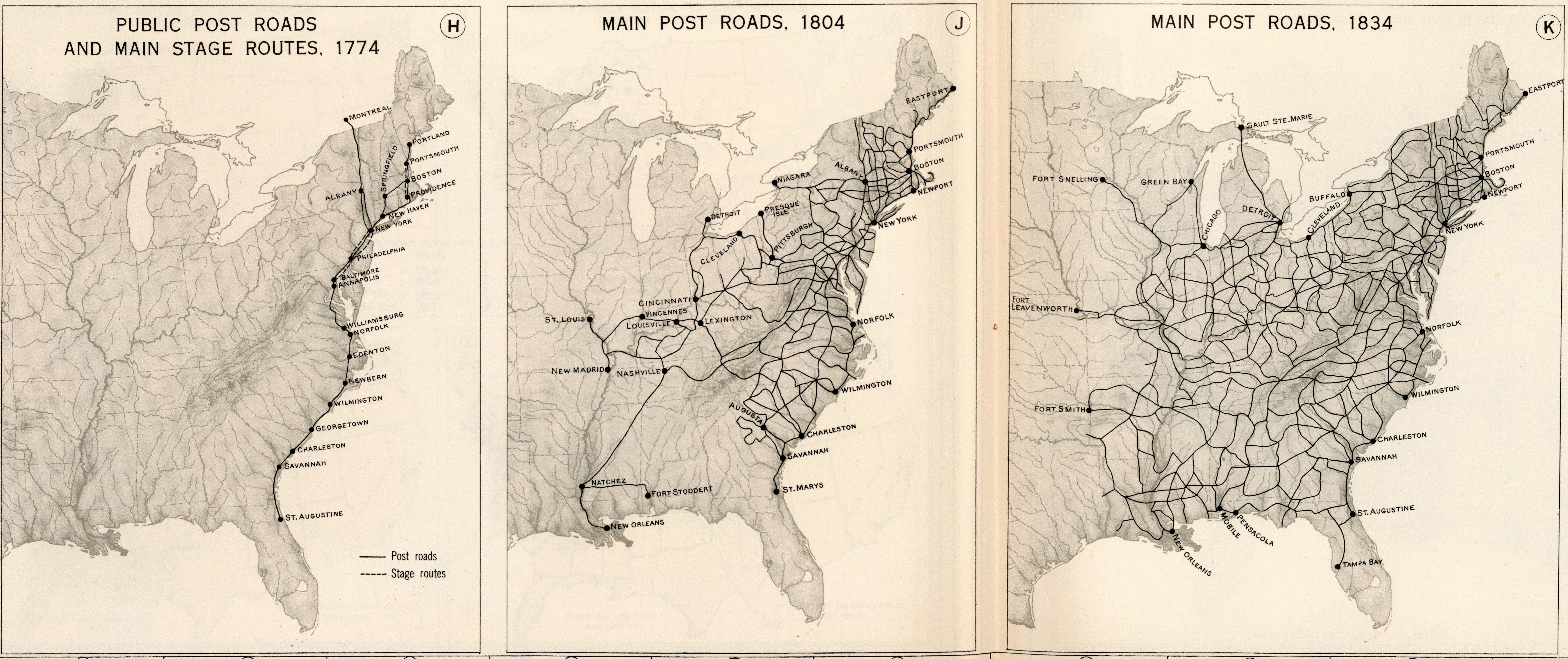
In the 18th century, the road network was focused along the East coast. Over the next sixty years, complex networks spread ever-Westward, improving trade, industry and travel. However, only non-motorized methods of transportation were used on these roads: carts, wagons, horseback, etc.
The introduction of Railways made transportation even faster! In a time when motorized vehicles were just being invented, and the Ford Model T, (the first car for the masses) was still to come, the efficiency of trains in the country left road-based transportation methods (carriages, carts, wagons etc) in the dust. It wouldn’t be until the twentieth century, when Ford’s Model T changed transportation again. As railway lines were introduced, dedicated and fast means of transporting people and goods by train became a standardized and efficient method of travel.
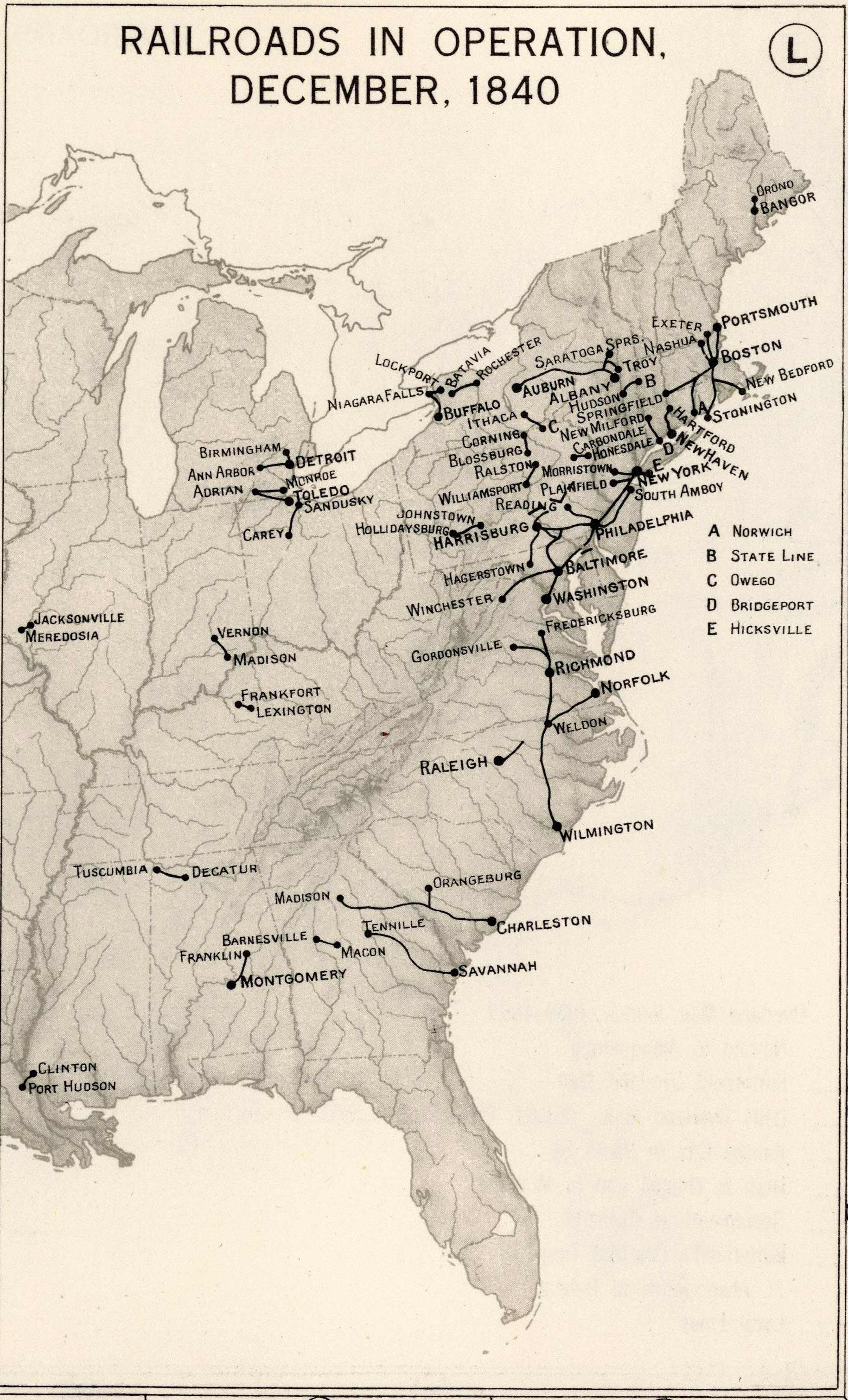
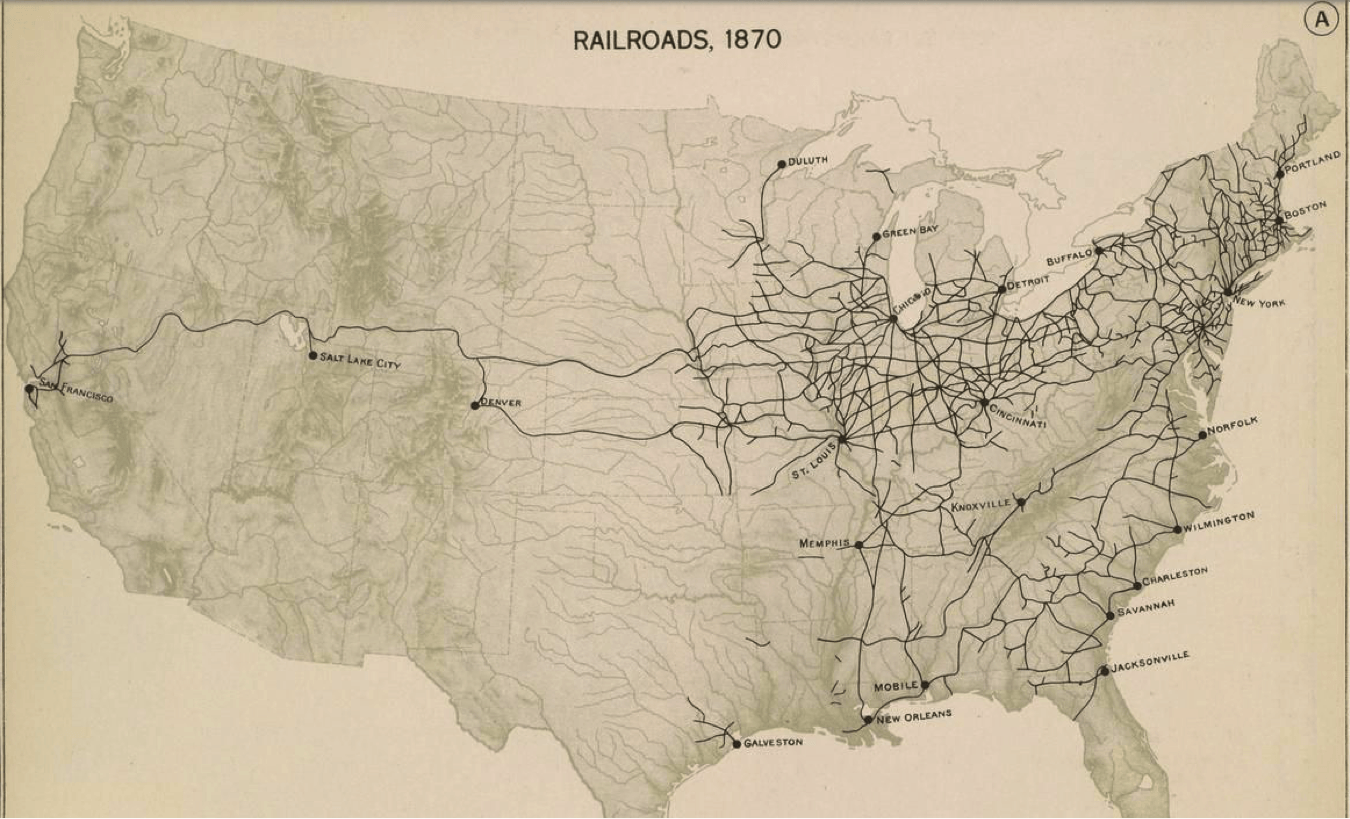
These above two images show railroad networks developing rapidly between 1840 and 1870. We can see how trains followed a Westward expansion.
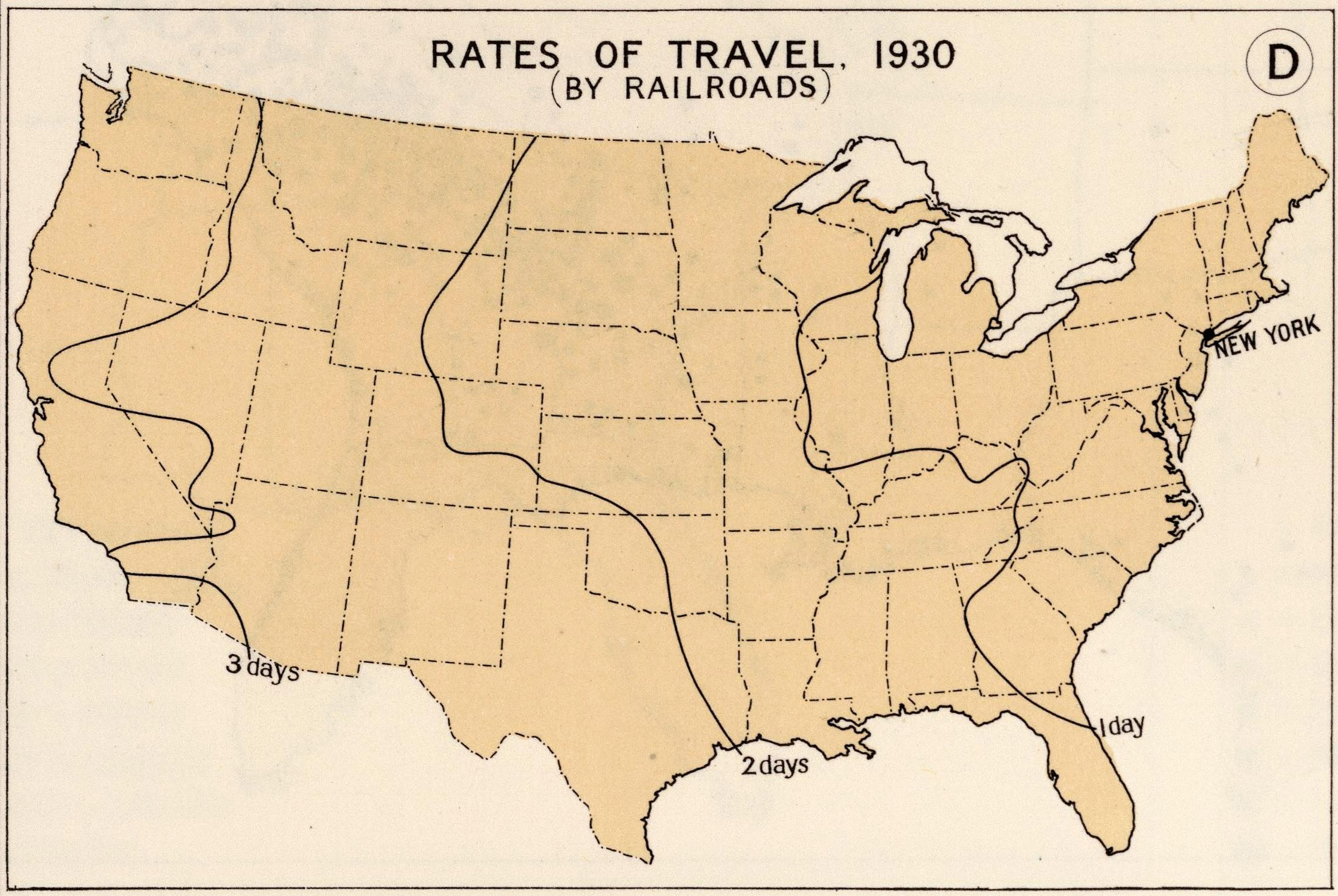
By the 1930’s, what would have once taken six weeks to travel by road takes a single day. To arrive across the country takes only three days!
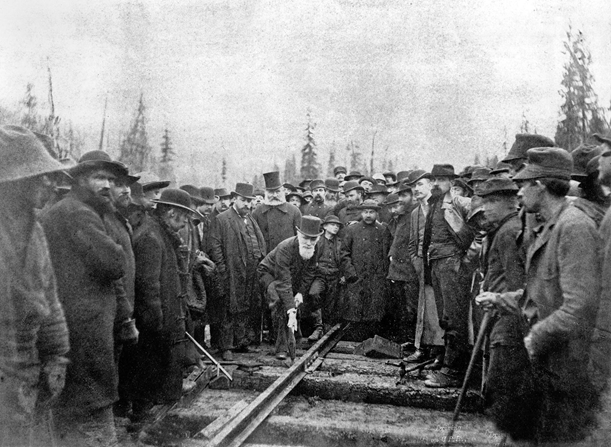
1885, Donald Smith drives the last stake into the Canadian Pacific Railway. | Image Credit: https://www.collectionscanada.gc.ca/trains/index-e.html
In Canada, the four year undertaking of the Canadian Pacific Railway was a major step in uniting the provinces, and really accelerated the transportation industry. Canada had only become a country in 1867, and included only four provinces: Nova Scotia, New Brunswick, Quebec and Ontario (and in 1870, the North West Territories were also included). The creation of the Railroad allowed the far-west land of British Columbia to be connected to its Eastern neighbours and become part of the Canadian Confederation. Connected coast to coast in 1885, the Canadian Pacific Railway was a huge landmark in Canadian history. Not only did the country expand its borders, but with the railway, freight and people could now quickly travel across the country, dramatically improving trade and industry, and the cohesiveness of this very large country.
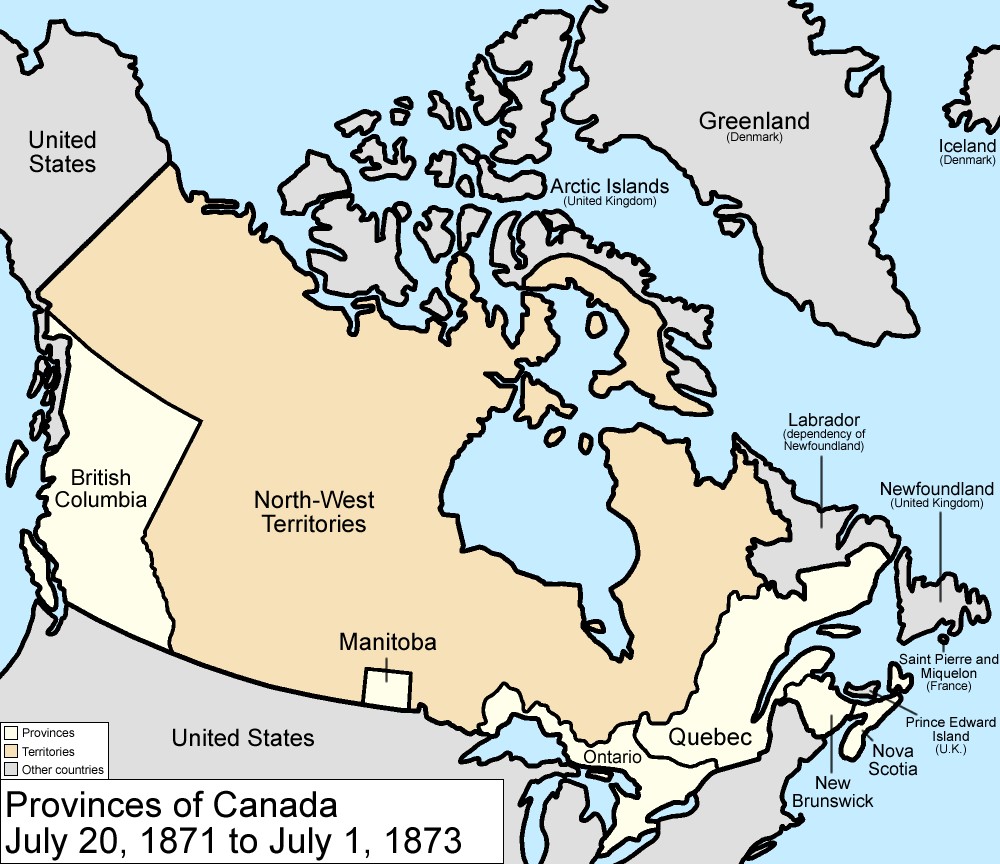
Canada looked different when it was a new country. Here is a map depicting the Canadian Territories and Provinces at the time that British Colombia joined the Confederation. | Image Credit: “Canada provinces 1871-1873”. Licensed under CC BY 2.5 via Wikimedia Commons – https://commons.wikimedia.org/wiki/File:Canada_provinces_1871-1873.png#/media/File:Canada_provinces_1871-1873.png
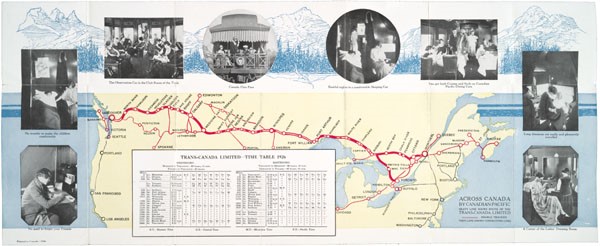
Shown is a Canadian Pacific Railway map from 1926. For decades to come, rail would be the most effective way to travel long distances. | Image Credit: https://www.collectionscanada.gc.ca/obj/021006/f1/nlc003092.1-v6.jpg
What would take weeks of travel in the 1800s becomes hours with the arrival of flight-based transportation of the 30’s. Today’s flights are much faster still, and allow worldwide travel that would have been hard to imagine 200 years ago.
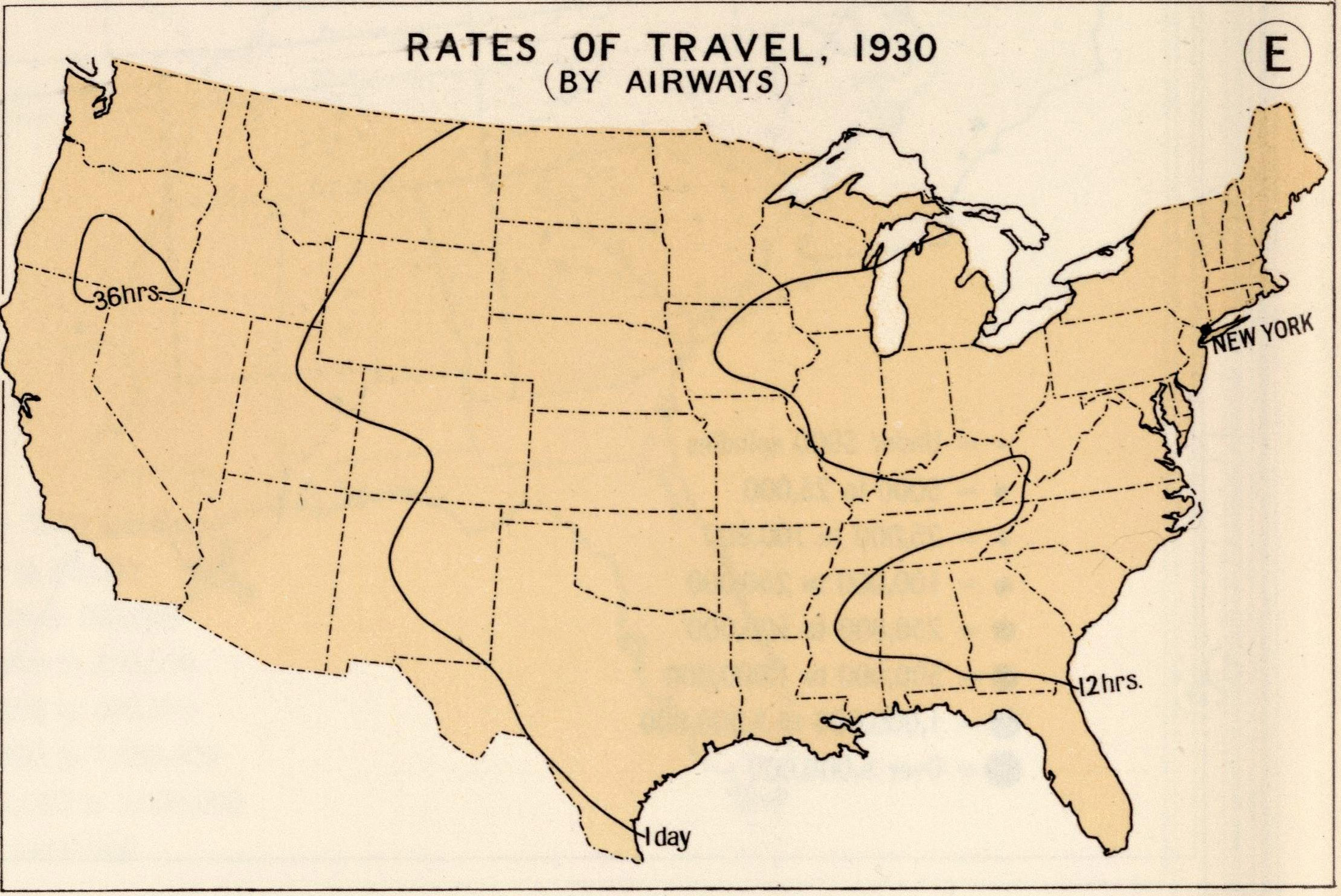
With the twentieth century, new transportation methods continue to improve the transportation industry across North America. Airplanes take wing, and motorized vehicles utilize roadways to their full potential. After the Model T, many types of motorized vehicles start to fill the streets, and soon Trucking becomes a foundational part of the increasingly interconnected economy.

At Challenger, we had our beginnings in 1975 as a trucking company, (admittedly long after the establishment of reliable roadways and superior transportation methods to a horse and cart). Yet we are a long standing company. Over forty years later, we proudly still offer trucking transportation services, now with superior logistics capabilities, green initiatives and more efficient vehicles and practices. We are not stuck in the past, and grow with the needs of the economy and our customers. In addition, we harness a comprehensive set of transportation methods through our logistics department, to move freight across the continent and around the world. Be it by road, rail, water or air, your freight will get where it needs to go. Our business is the transportation industry; where we stay innovative with the times.
Jessica Stickel
Marketing and Communications Coordinator
Challenger Motor Freight. Inc
Resources:
- “ARCHIVED – Canada, by Train.” Library and Archives Canada. Government of Canada, 04 Oct. 2002. Web. 25 Apr. 2016. <https://www.collectionscanada.gc.ca/trains/index-e.html>.
- “Canadian Pacific Railway.” Wikipedia. Wikimedia Foundation, n.d. Web. 25 Apr. 2016. <https://en.wikipedia.org/wiki/Canadian_Pacific_Railway#Building_the_railway.2C_1881.E2.80.931885>.
- “Our History.” Canadian Pacific. Canadian Pacific, n.d. Web. 25 Apr. 2016. <http://www.cpr.ca/en/about-cp/our-history>.
- Paullin, Charles O. “Plate 138. Transportation. Rates of Travel, 1800. Rates of Travel, 1830. Rates of Travel, 1857. Rates of Travel, 1930 (By Railroads). Rates of Travel, 1930 (By Airways). Navigable Rivers, 1930. Canals and Canalized Rivers, 1930. Public Post Roads and Main Stage Routes, 1774. Main Post Roads, 1804. Main Post Roads, 1834. Railroads in Operation, December, 1840.” David Rumsey Map Collection. Ed. John K. Wright. N.p., n.d. Web. 25 Apr. 2016. <http://www.davidrumsey.com/luna/servlet/detail/RUMSEY~8~1~248429~5516150>.
- “Travel times from New York City- US Transportation Networks in the 1800′s.” Random Interesting Facts. RIF, 20 Mar. 2014. Web. 25 Apr. 2016. <http://www.randominterestingfacts.com/travel-times-from-new-york-city-us-transportation-networks-in-the-1800s/>.
- Wiegand, Megah. “Your 12-Hour Road Trip Would Have Taken Six Weeks in 1800.” The Vault: Historical Treasures, Oddities and Delights. The Slate Group, 13 Aug. 2013. Web. 25 Apr. 2016. <http://www.slate.com/blogs/the_vault/2013/08/16/travel_times_in_the_u_s_moving_by_road_canal_boat_and_airplane_in_the_19th.html>.
